Oklahoma Pasture Rental Rates 2016-2017
Rental agreements and rates are influenced by the landowner’s costs, the tenant’s expected earnings, previous rates charged, competition for the land, government programs, tax laws and the non-agricultural economy. The results of a statewide farmland leasing survey conducted in 2016 are reported here. Respondents were individuals contacted through the Oklahoma Cooperative Extension Service who agreed to complete periodic surveys plus recipients of a mailing by the Oklahoma Agricultural Statistics Service. Approximately 330 surveys were returned with useable data. Figure 1 shows regions of the state used in reporting survey results: northwest, southwest, northcentral and east.
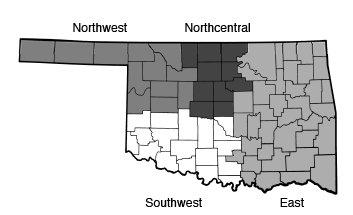
Figure 1. Regions Used in Reporting Farmland Leasing Survey Results.
On average, rental agreements for native pasture had been in effect for 13 years, 11 years for Bermudagrass and 10 years for other pasture (Table 1). The statewide average lease size was 467 acres for native pasture, 226 acres for Bermudagrass and 204 for other pasture. Median values are provided as an additional measure of the central tendency of the survey response distribution. The median is the value at the midpoint of the survey responses. Survey results document some regional differences in rental rates and average sizes of tracts rented. Figures 1a and 1b show the distribution of statewide responses regarding acres and the years held for native and Bermudagrass pasture leases, respectively.
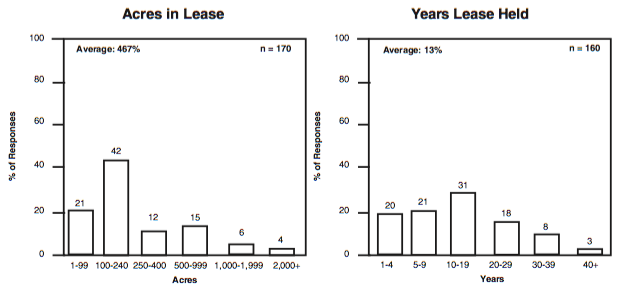
Figure 1a. Relative Frequency for Rental Statistics for Native Pasture, 2016-2017.
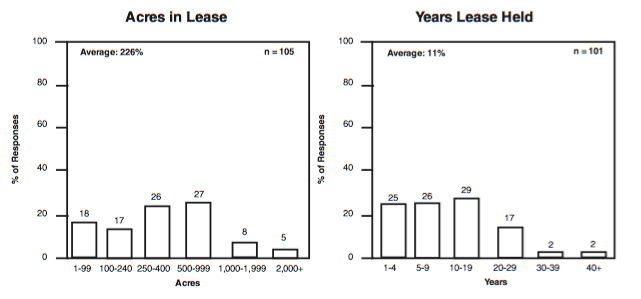
Figure 1b. Relative Frequency for Rental Statistics for Bermudagrass, 2016-2017.
Table 1. Rental Statistics for Pasture, 2016-2017.
| Native Pasture | |||||
|---|---|---|---|---|---|
| Northwest | Southwest | North Central | East | State | |
| Acres in Lease | |||||
| Number of Observations | 38 | 42 | 27 | 63 | 170 |
| Average | 368 | 610 | 409 | 457 | 467 |
| Median1 | 230 | 235 | 200 | 160 | 166 |
| Average Years Lease Held | |||||
| Number of Observations | 36 | 38 | 26 | 60 | 160 |
| Average | 13 | 16 | 13 | 12 | 13 |
| Median1 | 9 | 11 | 10 | 10 | 10 |
| Bermuda | ||||
|---|---|---|---|---|
| Southwest | North Central | East | State | |
| Acres in Lease | ||||
| Number of Observations | 31 | 15 | 57 | 105 |
| Average | 257 | 113 | 238 | 226 |
| Median1 | - | - | 160 | - |
| Average Years Lease Held | ||||
| Number of Observations | 30 | 15 | 54 | 101 |
| Average | 11 | 9 | 11 | 11 |
| Median1 | 10 | - | 8 | - |
| Other Pasture | ||||
|---|---|---|---|---|
| Northwest2 | Southwest2 | East3 | State | |
| Acres in Lease | ||||
| Number of Observations | 4 | 6 | 19 | 32 |
| Average | 325 | 154 | 211 | 204 |
| Median1 | 370 | 132 | - | 157 |
| Average Years Lease Held | ||||
| Number of Observations | 4 | 6 | 16 | 29 |
| Average | 15 | 11 | 10 | 10 |
| Median1 | 15 | 13 | 6 | 8 |
– Insufficient observations.
1 Median values that represent single observations are omitted.
2 Predominantly Old World Bluestem.
3 Predominantly Fescue.
Most tenants and landlords in Oklahoma appear to be satisfied with their lease agreements. About 65 percent of the respondents classified their leasing agreements as good or excellent from the standpoint of fairness with an additional 22 percent classifying their agreements as adequate. These levels of satisfaction have remained steady during the past several years.
Pasture Rental Rates
Common methods of renting pasture include:
- rate per acre,
- fixed rate per hundredweight per month,
- flat rate per pound of gain or
- share of gain or profit.
In addition to factors previously mentioned — the landowner’s costs, the livestock
owner’s expected earnings and previous rates charged, etc. — the kind and quality
of pasture, fences, location and water also influence the pasture rental rate. Negotiations
determine the type of agreement and the relative weight given to different factors.
Rental rates for native, Bermudagrass and other pasture are listed in Table 2. With
regards to native pasture, the state average rental rate of $13.95 per acre increased
less than $1 per acre compared to the 2014 rate of $13.39.1 Native pasture rental
rates were lowest in northwest Oklahoma at $10.94 per acre and highest in eastern
Oklahoma at $16.73 per acre. Figure 2a shows the distribution of per acre rates reported
for native pasture in Oklahoma.
The state average rental rate for Bermudagrass pasture was $22.79 per acre, up $1.74 per acre from the previous survey. Figure 2b shows the distribution of per acre rates reported for Bermudagrass pasture in Oklahoma.
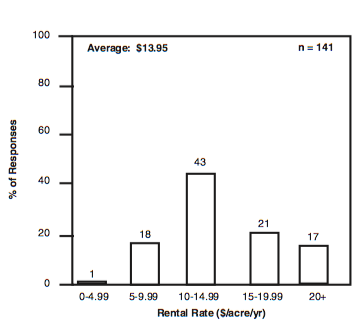
Figure 2a. Relative Frequency of Responses for Native Pasture Rental Rates.
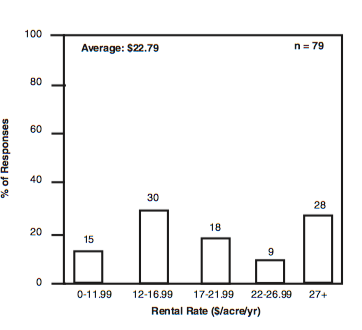
Figure 2b. Relative Frequency of Responses for Bermuda Pasture Rental Rates.
Table 2. Cash Rental Rates for Pastures, 2016-2017.
| Native Pasture | |||||
|---|---|---|---|---|---|
| Northwest | Southwest | North Central | East | State | |
| $/acre/year | |||||
| Number of Observations | 31 | 39 | 21 | 50 | 141 |
| Average | $10.94 | $12.78 | $13.95 | $16.73 | $13.95 |
| Median1 | $10.00 | $12.00 | $13.00 | $14.50 | $12.00 |
| Bermuda | ||||
|---|---|---|---|---|
| Southwest | North Central | East | State | |
| $/acre/year | ||||
| Number of Observations | 25 | 14 | 39 | 79 |
| Average | $20.27 | $24.55 | $23.96 | $22.79 |
| Median1 | - | $17.50 | $20.00 | - |
| Other Pasture | ||||
|---|---|---|---|---|
| Northwest2 | Southwest2 | East3 | State | |
| $/acre/year | ||||
| Number of Observations | 4 | 5 | 13 | 26 |
| Average | $17.83 | $17.40 | $25.55 | $22.09 |
| Median1 | $10.66 | - | $20.00 | $20.00 |
– Insufficient observations.
1 Median values that represent single observations are omitted.
2 Predominantly Old World Bluestem.
3 Predominantly Fescue.
Pasture rental rates for stockers on small grain winter grazing averaged $0.38 per pound of gain and $0.45 for leases including grazeout, down sharply from 2014 levels (Table 3). Pasture lease agreements may assign responsibility for checking livestock, providing salt and minerals or supplemental feed or pasture, and repairing fence to the tenant or landlord or both. Table 4 summarizes the distribution of survey responses by type of pasture: small grain winter grazing, small grain grazeout and other pasture (includes native, Bermudagrass and other improved pasture). Generally, the livestock owner was responsible for most of the terms of the pasture lease, although there are opportunities for sharing by both parties. In the winter grazing leases, less responsibilities were reported to be shared compared to the 2014 survey, with some responsibilities like fertilizer costs shifted to the pasture producer.
Table 3. Small Grain Pasture Rental Rates, 2016-17.
| Winter Grazing (November - March) | Both Winter Grazing and Grazeout (November - May) | |
|---|---|---|
| Acres in Lease | ||
| Numbers of observations | 25 | 41 |
| Average | 446 | 419 |
| Median1 | - | 160 |
| Average Years Lease Held | ||
| Number of observations | 23 | 39 |
| Average | 11 | 11 |
| Median1 | - | - |
| $/lb of gain | ||
| Number of observations | 6 | 11 |
| Average | $0.38 | $0.45 |
| Median1 | $0.35 | $0.45 |
1 Median values that represent single observations are omitted.
Table 4. Responsibility of Parties in Pasture Lease Agreements, 2016-17 (percent of responses).*
| Small Grain Winter Grazing | ||||
|---|---|---|---|---|
| Pasture Producer | Livestock Owner | Both | No. Obs. | |
| (percent) | ||||
| Checking livestock | 12 | 76 | 12 | 25 |
| Salt and minerals | 4 | 88 | 8 | 25 |
| Fencing materials | 43 | 43 | 1 | 23 |
| Fencing labor | 42 | 50 | 8 | 24 |
| Fertilizer cost | 57 | 35 | 9 | 23 |
| Supplemental feeding | 12 | 80 | 8 | 25 |
| Supplemental pasture | 9 | 82 | 9 | 22 |
| Water | 55 | 36 | 9 | 22 |
| Death loss | 0 | 92 | 8 | 25 |
| Both Winter Grazing and Grazeout | ||||
|---|---|---|---|---|
| Pasture Producer | Livestock Owner | Both | No. Obs. | |
| (percent) | ||||
| Checking livestock | 22 | 66 | 12 | 41 |
| Salt and minerals | 27 | 71 | 2 | 41 |
| Fencing materials | 37 | 56 | 7 | 41 |
| Fencing labor | 32 | 59 | 7 | 41 |
| Fertilizer cost | 44 | 49 | 7 | 41 |
| Supplemental feeding | 32 | 63 | 5 | 41 |
| Supplemental pasture | 38 | 59 | 3 | 39 |
| Water | 46 | 46 | 7 | 41 |
| Death loss | 8 | 80 | 13 | 40 |
| Other Pasture | ||||
|---|---|---|---|---|
| Pasture Producers | Livestock Owner | Both | No. Obs. | |
| Checking livestock | 10 | 82 | 8 | 289 |
| Salt and minerals | 8 | 85 | 7 |
286 |
| Fencing materials | 23 | 61 | 16 | 286 |
| Fencing labor | 17 | 71 | 12 | 287 |
| Fertilizer cost | 16 | 73 | 11 | 266 |
| Supplemental feeding | 8 | 85 | 6 | 283 |
| Supplemental pasture | 9 | 85 | 6 | 269 |
| Water | 28 | 62 | 10 | 285 |
| Death loss | 8 | 86 | 6 | 284 |
* Totals may not add to 100 due to rounding.
Table 5. Average Gross Cash Rent (Dollars per Acre) for Pasture Dryland, Selected States, 2007-2016.
| 2007 | 2008 | 2009 | 2010 | 2011 | |
|---|---|---|---|---|---|
| $/acre | |||||
| Oklahoma | 9.5 | 10.5 | 10.5 | 11 | 11.5 |
| Kansas | 14.5 | 15.5 | 15.5 | 15.5 | 16 |
| Missouri | 26 | 26 | 25 | 24 | 25.5 |
| Texas | 6.2 | 6.5 | 6.2 | 6.1 | 7.5 |
| 2012 | 2013 | 2014 | 2015 | 2016 | |
|---|---|---|---|---|---|
| Oklahoma | 11.5 | 12 | 12 | 12 | 13.5 |
| Kansas | 16.5 | 17.5 | 17.5 | 20 | 19 |
| Missouri | 28 | 29 | 29 | 34 | 32 |
| Texas | 6.5 | 6.5 | 6.5 | 7.5 | 6.8 |
Source: Agricultural Statistics Service, Oklahoma Agricultural Statistics 2016, USDA/NASS, Oklahoma Department of Agriculture, http://www.nass.usda.gov/ok/.
Other Lease Terms
Many lease agreements specify terms and conditions beyond the rental rate, which affect
the value of the lease and the “real” rental rate. Tenants may or may not be allowed
to hunt, harvest pecans, cut timber, use buildings or other improvements and lease
out hunting privileges. Lime application costs or similar costs for improvements in
which the benefits are returned over a number of years may be shared by the landlord
and tenant, or if the tenant pays for them initially, repaid by the landlord at a
fixed rate per year.
Tenants may be required to maintain fences, spray or clip weeds annually, provide
liability insurance, share oil field damages, maintain terraces and leave strips of
grain in the field for game. Landlords may provide a well and water, fencing material,
or land for a mobile home. Tenants may ask for several months notice if the landlord
wishes to terminate the lease agreement. In some cases, leases contain an option to
buy with rental payments applied to the purchase price.
Historical and Regional Perspective
Table 4 provides historical data on pasture rental rates for Oklahoma, Kansas, Missouri,
and Texas for 2007-2016 as reported by the USDA National Agricultural Statistics Service
(NASS). County level pasture rental rate data is available at: https://quickstats.nass.usda.gov/results/E0F5EB36-3313-3D7B-9E7F-E56A3365CF2B#9A9F55D7-E267-38C6-ACB9-DF106291B5A7. The next bi-annual USDA Cash Rent Survey will be available with the 2018 release
in September 2018.
Concluding Comments
“Fair” rents must be negotiated between tenant and landlord. Regional or state average
rental rates may be used as a beginning point for discussion and negotiation of rental
rates. However, differences in land quality and improvements, and restrictions on
land use can greatly impact the value of potential leases. Likewise, differences in
family living expenses and hired labor costs can be substantial for different operations,
affecting the maximum rental bids.
New legal restrictions and liability factors may call for changes in future farm lease
agreements. Some farm management firms include language requiring that the tenant
will be responsible for following label restrictions in the use of pesticides, for
remaining in compliance with the farm’s conservation plan, and for disposing of wastes
in a manner approved by the Environmental Protection Agency, etc. Some leases already
stipulate precisely what fertilizers, pesticides, and seed may be used on the property.
Both landlords and tenants must be aware of changing environmental laws and regulations
to avoid potentially costly liabilities.
Related Publications and Other Resources
To help educate landlords and tenants with equitable lease agreements and current
best management practices, visit the Oklahoma State University (OSU) Ag Land Lease
website at http://www.aglandlease.info or http://www.aglease.info. A joint effort between OSU’s Plant and Soil Sciences and Agricultural Economics
Departments, the website contains a wide assortment of farm management spreadsheet
tools, lease information and forms, rental rate and land value resources, legal and
tax considerations, livestock and hunting lease publications plus the latest production
practices in Oklahoma.
The AgLease101.org website hosts several North Central Farm Management Extension Committee (NCFMEC) publications on leasing including these titles:
- Crop Share Rental Arrangements For Your Farm, NCFMEC-2
- Fixed and Flexible Cash Rental Arrangements For Your Farm, NCFMEC-1
- Pasture Rental Arrangements, NCFMEC-3
In addition to publications, worksheets and free downloadable sample lease forms are
available on the site.
Recent Oklahoma school land lease auction information is also available through the Real Estate Management Division of Commissioners of the Land Office at https://clo.ok.gov/services/auction-information/real-estate/.
